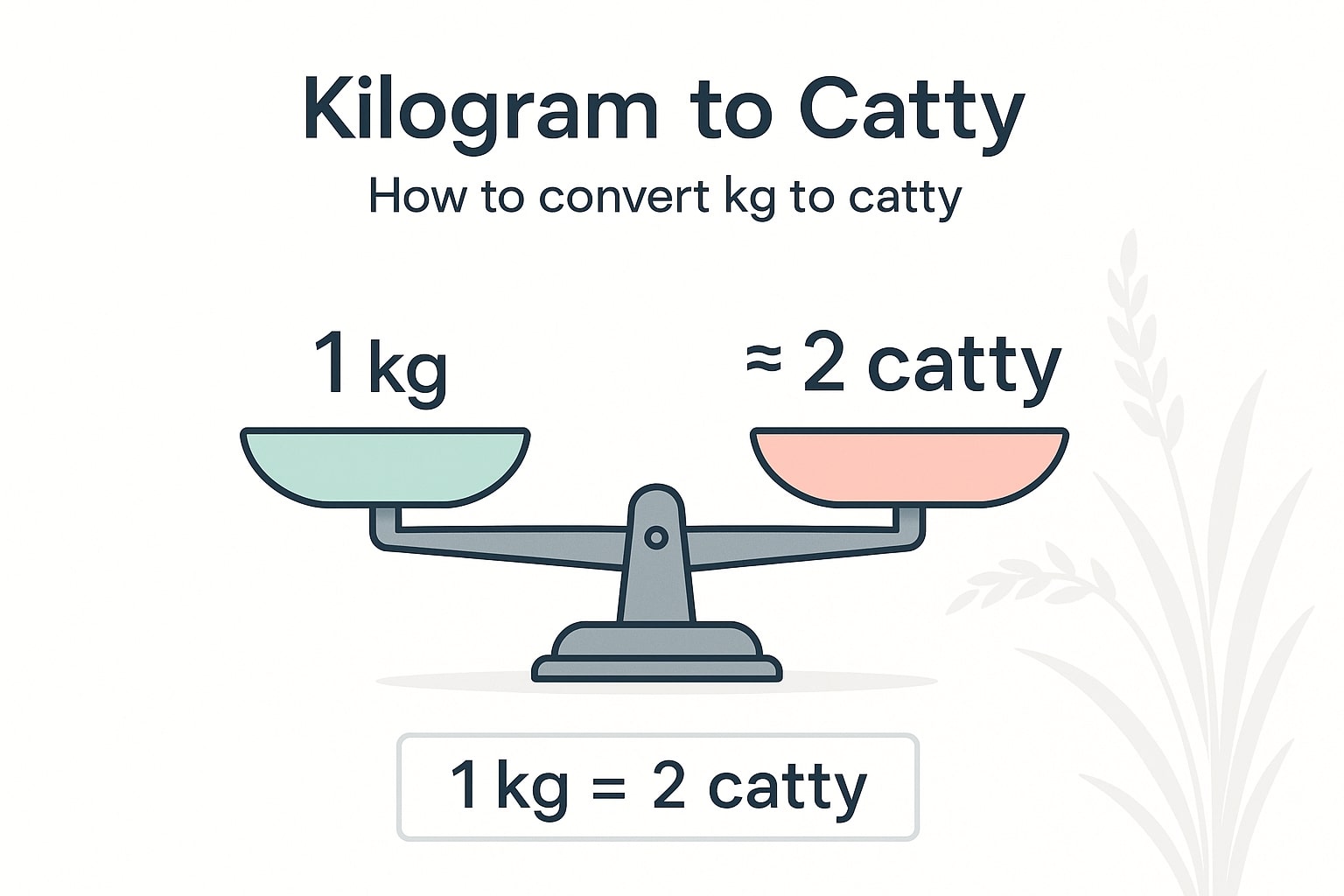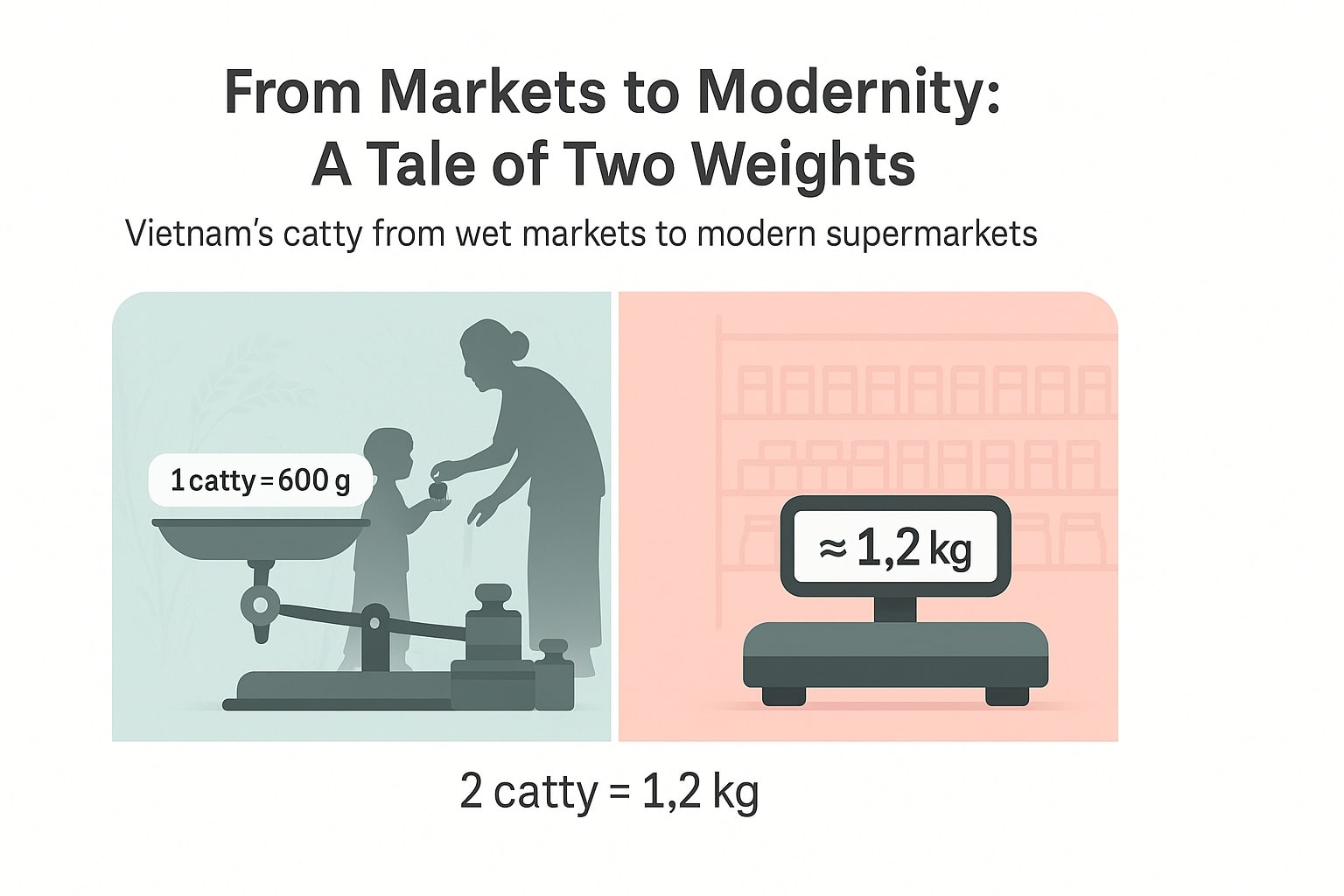Kilogram to Catty – How to convert kg to Catty
The Kilogram to Catty conversion opens up a fascinating look into traditional Asian units of mass. If you're dealing with regional produce weights, food packaging, or historical trade records, you’ve likely seen the term "catty" used instead of kilograms. Jetcalculator's Kilogram to Catty Converter helps simplify this process with accuracy and ease. For other conversions, try our Unit Converter to explore across measurement systems.
What is Kilogram and What is a Catty?
-
Kilogram (kg) is the SI base unit of mass. Defined as exactly 1,000 grams, it's the standard used in modern science, commerce, and everyday life. Kilograms are used worldwide except in some U.S. customary contexts. You can also explore other mass conversions using our Weight Converter
-
Catty, also known as jin (斤 in Chinese), is a traditional mass unit widely used across East and Southeast Asia. Unlike kilograms, its value varies by country:
|
Region |
Catty Equivalent |
|
China, Taiwan |
1 Catty = 500 grams |
|
Vietnam |
1 Catty = 600 grams |
|
Hong Kong |
1 Catty = 604.78982 grams |
|
Malaysia |
1 Catty = 604.8 grams |
|
Singapore |
1 Catty = 500 grams |
These regional values reflect cultural, agricultural, and economic influences over time.

How to Convert Kilogram to Catty
To convert kilograms to catty, use the following formulas:
-
China/Singapore/Taiwan:
1 kg = 1000 ÷ 500 = 2 catty -
Vietnam:
1 kg = 1000 ÷ 600 ≈ 1.667 catty -
Hong Kong/Malaysia:
1 kg = 1000 ÷ 604.8 ≈ 1.653 catty
Example – Convert 3 kg:
-
In China: 3 × 2 = 6 catties
-
In Vietnam: 3 × 1.667 = 5.001 catties
-
In Hong Kong: 3 × 1.653 ≈ 4.96 catties
Our converter does the math for you instantly. You can also try our broader Conversion Tool for additional units.
Did You Know?
-
Kilogram:
• The kilogram prototype stored in Paris lost atomic stability, leading to a redefinition in 2019 based on the Planck constant.
• Athletes often track weight in kilograms when calculating lean mass or body composition.
• Many food recipes in Europe use kg and g, unlike the U.S., which prefers pounds and ounces. -
Catty:
• In Vietnam, the “cân” (short for “catty”) is still used in wet markets, especially for fruits, meat, and seafood.
• In China, jin (catty) is a standard unit seen in supermarkets and wholesale pricing.
• A common saying in Chinese culture: “Half a catty, eight taels” (五十步笑百步) means “almost the same” — referring to close quantities.
• Old Hong Kong street vendors had cast iron weights in catty units, balancing them on handmade scales.
From Markets to Modernity: A Tale of Two Weights
In 1970s Vietnam, traditional wet markets dominated food supply. Sellers and buyers didn’t rely on digital scales — they used hand-held beam balances and stacks of metal weights in 600g catty units. Many of these weights were family heirlooms passed down through generations. A Hanoi grandmother might ask her grandchild to "go buy 2 catty of pork," meaning 1.2 kg.
Fast forward to modern days — even as supermarkets rise, the language of the catty remains embedded in daily life, showing the cultural endurance of traditional systems.

Conclusion
Whether you're buying groceries in Asia, analyzing historical trade records, or converting weights for culinary or research purposes, knowing how to convert kg to Catty is still highly relevant. Use Jetcalculator’s Kilogram to Catty Converter for quick, accurate results, and explore more tools via our full Conversion Tool to bridge modern and traditional measurements.

